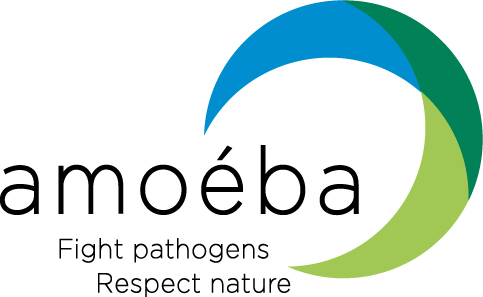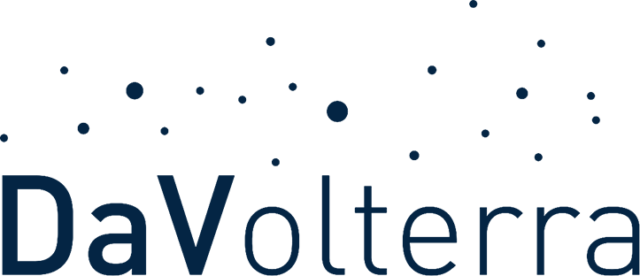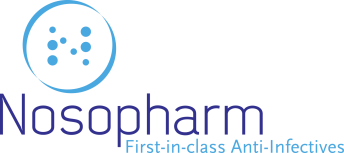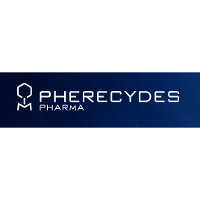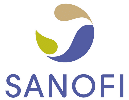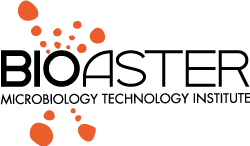Our mission is to develop knowledge, know-how and technologies to know, understand and analyze the interactions between host/pathogen/therapeutic solution and thus contribute to the fight against the emergence of new infectious diseases and antimicrobial resistance (AMR).
As a developer of curative or preventive health solutions, you face several challenges:
- build a comprehensive and coordinated development approach,
- develop treatments that target known or emerging priority pathogens,
- propose alternative strategies (antibodies, peptides, phages, etc…),
- find complementary approaches to limit the resistance or persistence of bacteria.
We work on the main infectious diseases namely nosocomial infections, neglected tropical diseases and pandemics.
Pathogens that we routinely handle in a BSL2 or BSL3 environment include those on priority lists from WHO, health authorities and Centers for Infectious Disease Control. They can be intra or extracellular, have an independent (planktonic) or organized (biofilm) behavior and multiply rapidly or be dormant.
They are at the origin of a variety of infectious diseases on which we can cooperate.
The substances you wish to develop, for therapeutic or prophylactic purposes, can be directed against the pathogen or specific to the host (mammalian receptor, immune response or microbiota).
We will contribute to your drug discovery & drug development challenges by offering you a global and coordinated approach ranging from alternative methods for identifying hits, selection criteria for innovative and quality leads, and in-depth characterizations of your drug candidates, to evaluations of the therapeutic potential of your products in targeted combinations. In silico analyses and predictions would support drug discovery & drug development at every level.
When necessary, we adapt classic models and tests or develop new ones to offer the solutions that best meet your specific needs. For example, in the context of phage therapy, we have adapted classical biodistribution and pharmacokinetic methodologies to study in vivo the concentration of phages in different organs over time after I.V. injection. In silico design of novel targets and antimicrobials was also developed, as well as the prediction of mechanism of action of new drugs, and their optimization.
- nosocomial, often bacterial or fungal, usually responsible for respiratory tract, urinary tract, bloodstream or skin infections
- emerging, often viral or parasitic, usually responsible for epidemics, pandemics or neglected tropical diseases
- viruses (e.g. SARS-COV-2, dengue fever, HBV, chikungunya)
- bacteria (e.g. ESKAPE, Clostridium difficile, Mycobacterium tuberculosis, AMR bacteria)
- parasites (e.g. Trypanosoma cruzi, Leishmania donovani, Plasmodium spp)
- fungi (Candida albicans, Candida auris, Aspergillus fumigatus)
- small molecule, single ingredient or in combination
- large structures (peptide, proteins, antibodies, nucleotides)
- extracts and natural products
- alternative approaches such as bacteriophages
- host-oriented therapies (immunomodulator, etc.)
- respiratory tract, pneumonia, COVID, flu, HAP (Hospital Acquired Pneumoniae), VAP (Ventilator Associated Pneumonia)
- urinary tract cUTI, pyelonephritis
- bloodstream, bacteremia, septicemia
- skin & soft tissues, wounds
Hits identification of and hits to leads
In order to generate new antibiotics from anaerobic bio-resources, we are developing new screening methods, based on micro-fluidics in order to identify new antibiotic-producing bacteria.
Our ability to cultivate these fastidious bacteria of interest in sufficient quantity allows us to analyze the structure of the antibiotic compound by HPLC, MS, NMR. After identification of the antibiotic biosynthesis process by the anaerobic bacterium and transfer of this process by strain engineering, we can provide you with an easily cultivable strain capable of producing the new identified antibiotic.
The in vitro evaluation of the activity of your compounds on clinical strains or models according to the recommendations of CLSI or EUCAST, in planktonic or biofilm form, will allow you to measure their susceptibility and resistance in a wide range of different conditions.
Leads optimization
This first level of characterization is based on advanced artificial intelligence predictions and in vitro models, whose experimental design (in vivo mimicking media, organ-on-chip, dynamic environment) is more representative of in vivo. This is in particular to allow you to derisk your product in the early preclinical phases.
The in silico identification of new targets and subsequent validation, biological pathways involved in the activity of your antibiotic, as well as the demonstration of the novelty of a mechanism of action prediction via Machine Learning, are made possible thanks to a set of OMIC technologies, bioinformatics and integrated artificial intelligence.
Drug Candidate Characterization
As a preamble to in vivo studies, we suggest to you carry out biodistribution studies and evaluations of pharmacokinetic profiles in order to determine the optimal therapeutic regimen (route of administration, dose, number of doses and interval between doses). Then we can assess the efficacy of your candidate, alone or in combination. Finally, studies of PK/PD relationships according to different routes of administration can nicely complement the evaluation of your drug candidate. All there studies can be carried out first in an in silico system employing cutting edge technologies such as Artificial Neural Network, before validation in other models such as in vitro or in vivo.
We customize our rodent preclinical models of infectious diseases to the specifics of your product before testing their efficacy (pathogen resistance, immune status, severity of infection, chronicity, readouts, etc.). These bespoke models relate in particular to sepsis, pneumonia, urinary tract infections, skin and soft tissue infections, abscesses, heart infections.
In addition, they also allow searching for biomarkers of treatment efficacy during these studies.
Together, and with the support of the most explainable Artificial Intelligence techniques, we cherry-pick the most relevant readouts that will be used in the study, amongst several parameters: clinical (survival, weight, temperature, etc.), microbiological (CFU, PFU, in vivo imaging, etc.), immunological (recruitment of PBMC, dosage of cytokines, neutralizing antibodies, etc.) and histological. For example, our COVID-19 preclinical model is highly customizable to fit the specifics of your products.
In the context of host-oriented therapies,
we propose to:
- characterize the immune response during antimicrobial treatment to refine the therapeutic regimen,
- study the modulation of the immune response by your product alone or in combination,
- quantify the immune response to compare molecules based on these analyses.
In silico design of new antimicrobials
Artificial Intelligence (AI) is a technique that lately is seeing a lot of interest by the Pharma sector. In silico studies could be an extremely important first step in order to derisk next more expensive analyses.
We employ the latest AI techniques in the design of new antimicrobials / target identification, in order to maximize efficacy and minimize the risk of antimicrobial resistance. Internal collaboration with Data Scientists and Machine Learning Engineers together with Antimicrobial and Biologist experts ensures the development of ad-hoc algorithms to answer to specific antimicrobial needs. Only the best predictions from the models could move forward the drug development pathway, therefore minimizing the risk of focusing on inefficient molecules.
In silico optimization of drug-target interaction
Thanks to the development and use of Machine Learning models for protein prediction, advancements in in silico docking prediction, and novel Deep Learning architectures to address problems with high complexity, it is nowadays possible to predict drug-target interaction. We are able to work in collaboration with partners to optimize molecular structure in an iterative way to increase drug-target interaction according to ad-hoc specification. This in silico pipeline would allow collaborators to narrow the range of molecules to test in downstream experiments to a handful of optimal structures potential possessing desired characteristics.
References
